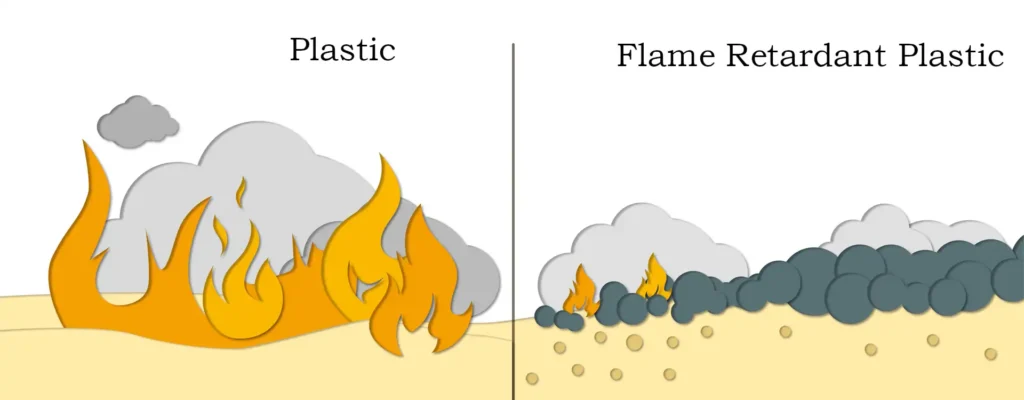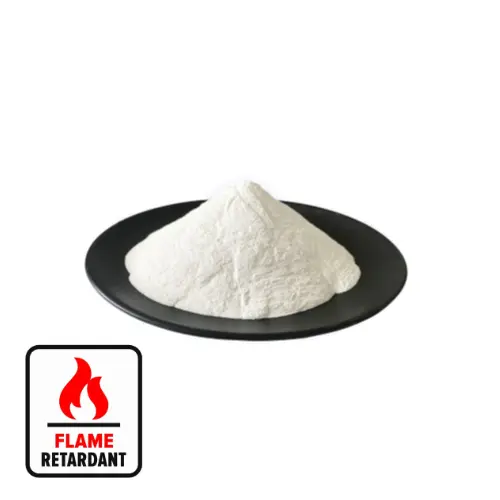Abstract
The present invention relates to a method of surface modification of a new type of magnesium hydroxide flame retardant, said method being dispersing magnesium hydroxide powder in a solvent, and then dissolving the coupling agent bis-(2-(triethoxysilyl)propyl)-tetrasulphide in an appropriate amount of anhydrous ethanol and mixing it thoroughly with the magnesium hydroxide solution, and reacting at a certain modification temperature with strong magnetic stirring, for 4-12 h. At the end of the reaction, the resulting product is pumped and filtered, and washed with the used solvent several times. After the reaction, the product was filtered and washed with the used solvent for several times, and the product was completely dried under vacuum at 80℃-120℃ to obtain the modified magnesium hydroxide. The modified magnesium hydroxide can be well blended with a variety of resin matrix, and the dispersion is good, and can also improve the flame retardant properties and mechanical properties of composite materials.

Description
Surface Modification of a Novel Magnesium Hydroxide Flame Retardant
Technical Field
The present invention relates to the field of surface modification method of magnesium hydroxide flame retardant, and specifically relates to a new surface modification method of magnesium hydroxide flame retardant.
Background technology

With the continuous development and progress of science and technology, polymer materials are more and more used in people’s daily life as well as in industrial production, but the vast majority of polymers are flammable, and thus the flame retardant treatment of polymer materials is also attracting more and more attention.
Due to the existence of halogenated flame retardant decomposition produces a large number of smoke and toxic gases harmful to people’s health, halogen-free environmentally friendly flame retardants began to be more and more people’s attention. Among them, metal hydroxide flame retardant is more commonly used in polymer flame retardant due to its cheap and easy to obtain and obvious flame retardant effect. However, the surface of pure magnesium hydroxide shows “hydrophilic and oleophobic” nature and it is difficult to be uniformly dispersed in polymers, so it is very important to carry out surface modification to improve its compatibility with polymers.
Silane coupling agents such as KH550, KH560, etc. are commonly used modifiers of magnesium hydroxide, which have a certain effect on improving the compatibility between magnesium hydroxide and the polymer matrix, but it is generally very difficult to improve its flame retardancy.
In the present invention, silane coupling agent bis-(2-(triethoxysilyl)propyl)-tetrasulfide (Si69) is used as a modifier, which is grafted onto the surface of magnesium hydroxide.Si69 contains sulfur, which effectively improves the compatibility of elosilicate in the resin matrix and plays the role of cross-linking, which can improve the mechanical properties of the system, and at the same time, the introduction of sulfur can improve the system’s flame retardant properties.
Contents of the Invention
The purpose of the present invention is to prepare a novel surface modification method of magnesium hydroxide flame retardant, in which a coupling agent is grafted onto the surface of magnesium hydroxide by means of chemical bonding to improve its dispersion and compatibility in the resin matrix.
In order to realize the above purpose, the technical solution of the present invention is to provide a novel surface modification method of a magnesium hydroxide flame retardant, the components and mass parts of which are:
The modification step of the surface modification method of the said new magnesium hydroxide flame retardant is as follows: dispersing magnesium hydroxide powder in solvent and stirring for 5-10 minutes; then dissolving the coupling agent in an appropriate amount of anhydrous ethanol and mixing it fully with the magnesium hydroxide solution, and then reacting at a certain modification temperature with strong magnetic stirring for 4-12 h. At the end of the reaction, the resulting product is vacuum-extracted with microporous filter membrane or filter paper, and the product is washed with the used After washing with the solvent for several times, the product is completely dried under vacuum at 80℃-120℃ to obtain the modified magnesium hydroxide.
The particle size of said magnesium hydroxide is 100 mesh-1000 mesh.
Said coupling agent is bis-(2-(triethoxysilyl)propyl)-tetrasulfide.
Said solvent is distilled water.
Said modification temperature is between 70°C and 90°C.
Said vacuum drying time is 12-24h.
The present invention prepares a new surface-modified magnesium hydroxide, grafting the coupling agent bis-(2-(triethoxysilyl)propyl)-tetrasulphide onto the surface of magnesium hydroxide, with a simple process, easy availability of raw materials and high conversion rate, which improves the compatibility and also the flame retardant properties of the material.
In practical application, the modified magnesium hydroxide of the present invention can be blended with a variety of base resins, modified magnesium hydroxide can be very good to improve the original magnesium hydroxide in the base resin dispersion and compatibility problems, and at the same time, can improve the mechanical properties of the base resin materials and flame retardant properties.

